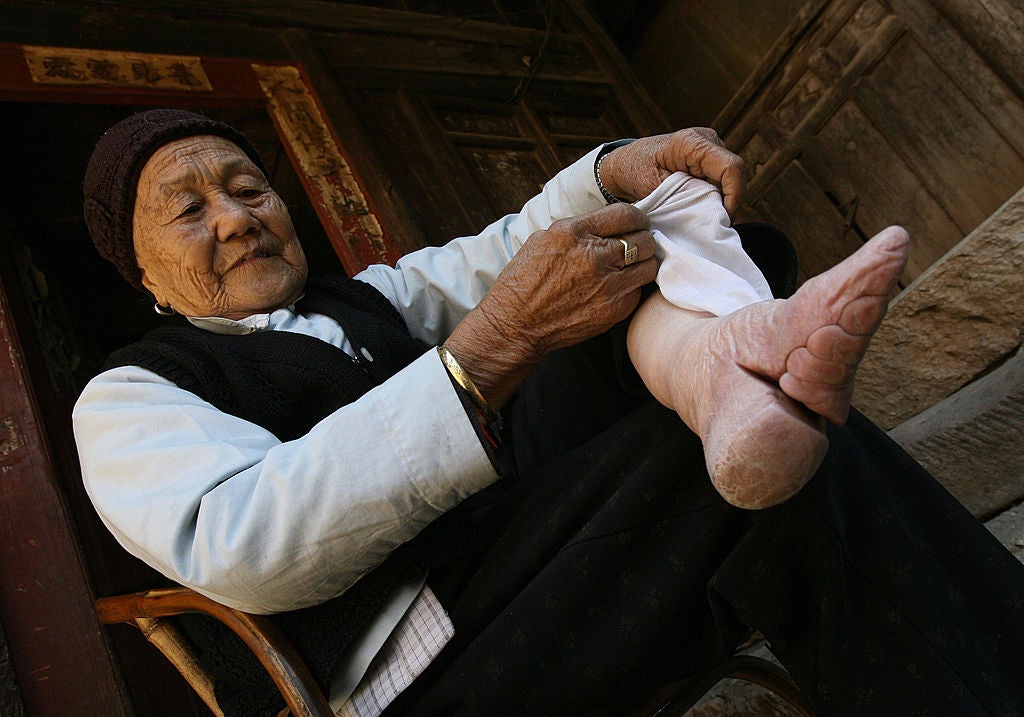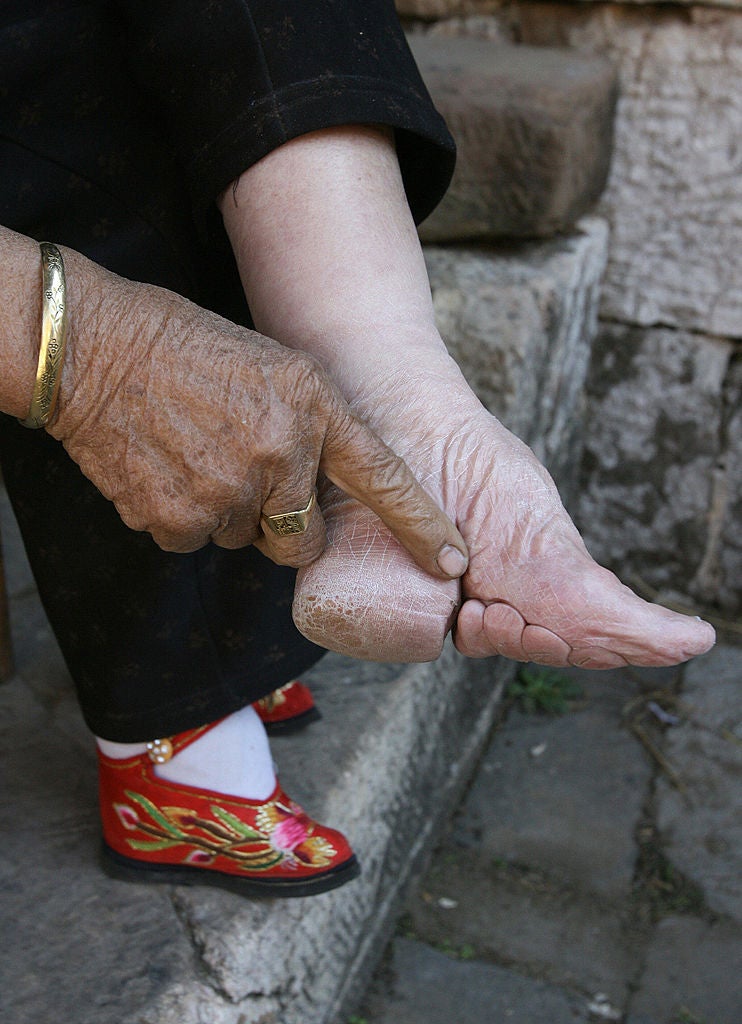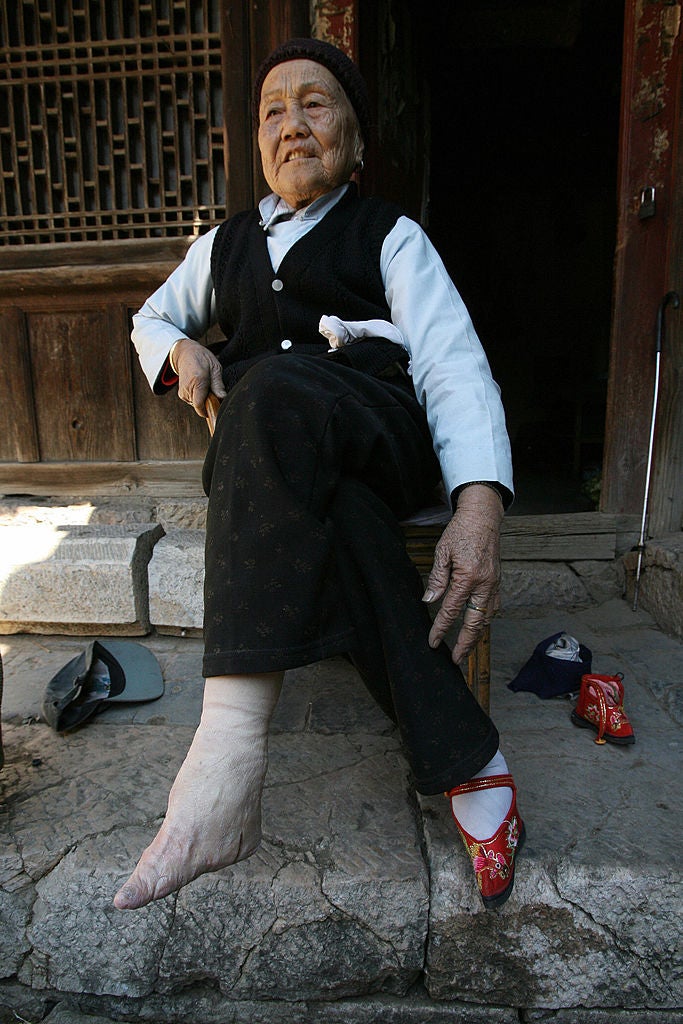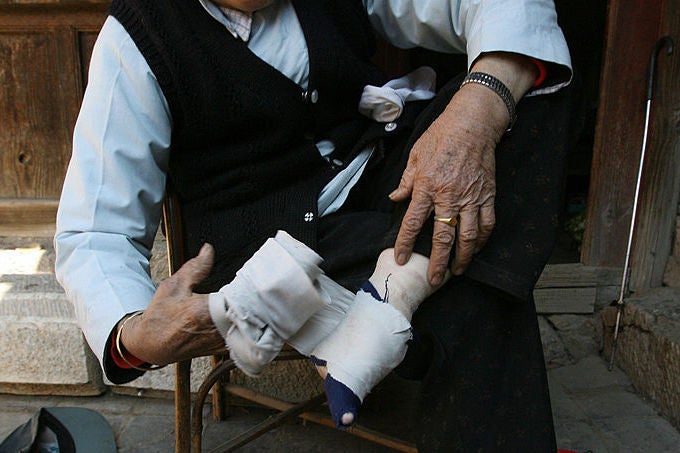Graphic photos show brutal reality of ancient Chinese practice of foot-binding
Warning: this post contains graphic images

Shocking images have been released that show the harsh reality of the ancient Chinese practice of foot-binding.
Carried out on girls as young as four, the practice involves breaking toes to manipulate the feet into a lotus shape.
Foot-binding, as it is known, was first carried out 1,000 years ago. It was normal for centuries, until being finally outlawed in 1911.

It was adopted among courtesans after a Tang Dynasty emperor fell in love with a mistress who had tiny feet and wrapped them in silk when dancing.
The practice became the norm amongst upper-class court performers, but it soon spread to all classes.
Moulding the lotus-shaped foot involves cutting a girl’s toenails really short when she’s aged between four and nine, before tightly wrapping the foot in bandages.

The bones would be broken and the feet mutilated.
It was often carried out in winter when feet would be numb and so it would be slightly less painful, but it was of course still a highly traumatic experience.
Having lotus-shaped feet was considered a sign of wealth and beauty - it was only girls who were subjected to the practice though.
Although foot-binding occurred across all socio-economic divisions, it was most common in wealthy families as they could afford not to work.
Once a foot had been bound, it was almost impossible to undo.

There are now just a few surviving elderly women who underwent the practice, and they’ve suffered from lifelong pain and disabilities as a result.
The pictures showing the realities of foot-binding under the Qing dynasty, who ruled from 1644 to 1912.
Once their rule was over, life in China changed dramatically, and many ancient traditions - of which foot-binding was one - were consigned to history.
Join our commenting forum
Join thought-provoking conversations, follow other Independent readers and see their replies
Comments